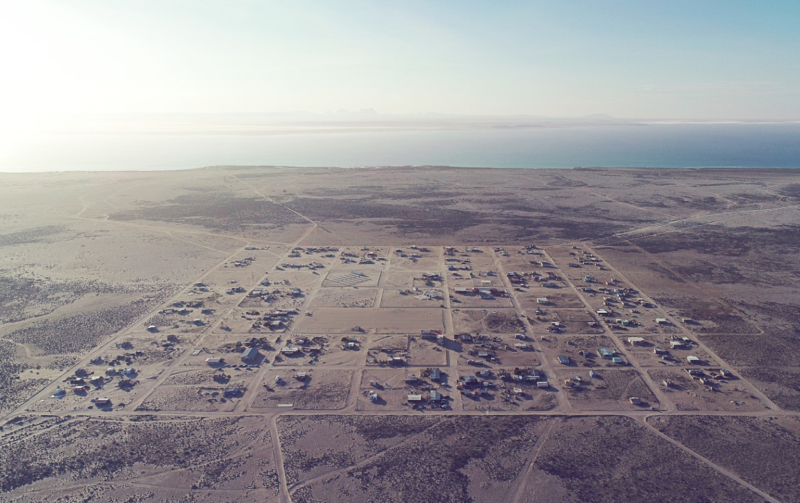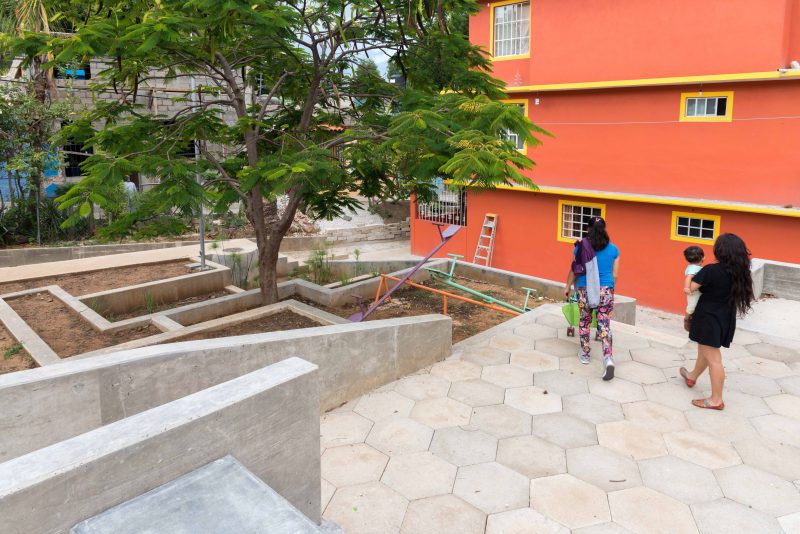Oliver J. Curtis and Gabriel Muñoz Moreno met in 2015 while at the Harvard Graduate School of Design where their common interest in architecture and ecology brought them together. As co-recipients of a research fellowship through Harvard’s Mexican Cities Initiative, they studied adaptation and development patterns throughout the oases of Baja California. An arid and rugged mountainous ridge, the Baja California region is home to more than one hundred inland and coastal oases. This project explored the development patterns, construction methods, and resiliency strategies already in place to understand the impacts of urban- and tourism-related growth. Without preconceived notions, they […]
Category Archives: Uncategorized
The Mexican National Workers’ Housing Fund Institute, or Infonavit, is the most important actor in the nation’s housing market. As of 2015, it was the leader in mortgage origination, accounting for roughly 74 percent of all housing loans. The institute was founded in 1972 with the mission of fulfilling the right to housing provided to workers as established in the Mexican Constitution, primarily through the provision of credit for the purchase of formal housing. Today, roughly one out of every four Mexicans lives in a home financed or built by Infonavit. Success for the institution has traditionally been measured regarding […]
MAUD ’14. Víctor Manuel Rico Espínola, MAUD ’14. Mexico City is often portrayed as a kind of self-organizing chaos. Nonetheless, it follows a logic of its own. After the Spanish conquest of the Aztec empire in 1521, insistence to consolidate the new capital in the middle of a marshy island, and a continuous battle against floods, led decision makers of the time to drain an entire lake to the ocean. In that sense, Mexico City confronted its own geography in a way very few cities have. Not only has the city’s form been the result of political intention, it has […]
Please join us for: Presentation of 2015 Grantee Research & Reception March 3rd, 2016 Gund Hall-Loeb Library Lobby 6:30 pm Reception to Follow Presentations Presenting: En Bici–Michael Meo & Carlos Hernandez Tellez Invisible Infrastructure — Jessica Bello & William Rosenthal Nested Informalities–Yi Li & Dennis Harvey Housing Resilience–Margaret Scott & Irene Figueroa-Ortiz
by Ricardo Nurko and Analiese Richard In order to understand how local government actors operate with regard to public space in Mexico City, you need to be acquainted with the overlapping administrative layers and temporality of bureaucratic processes. As it turns out, the management of public space has a lot to do with “political time.” In the first place, it’s important to point out that our grand megalopolis is composed of several different federal entities ruled by legislatures with a certain degree of independence: The Metropolitan Zone of the Valley of Mexico (ZMVM, by its Spanish acronym) is an urban […]
Mexico is implementing far-reaching changes to its housing and urban development processes. The work done at the Rethinking Social Housing in Mexico Project explores and documents such transition, particularly how housing and urban policies are implemented by various levels of government across Mexico. The project includes the following components: Studios Research Workshops Learn more about this project.
Mexico City’s experience shows that you can’t establish a “right to the city” without taking on the power of capital. This article by David Adler was originally published in Jacobin Magazine. “The right to the city is like a cry and a demand,” Henri Lefebvre wrote in 1967. “A transformed and renewed right to urban life.” This is a cry and demand today heard worldwide. From a slogan among Situationists in 1968 to the central theme of the United Nations Habitat II conference three decades later, the “right to the city” has grown into a global catch phrase, tossed around by […]

